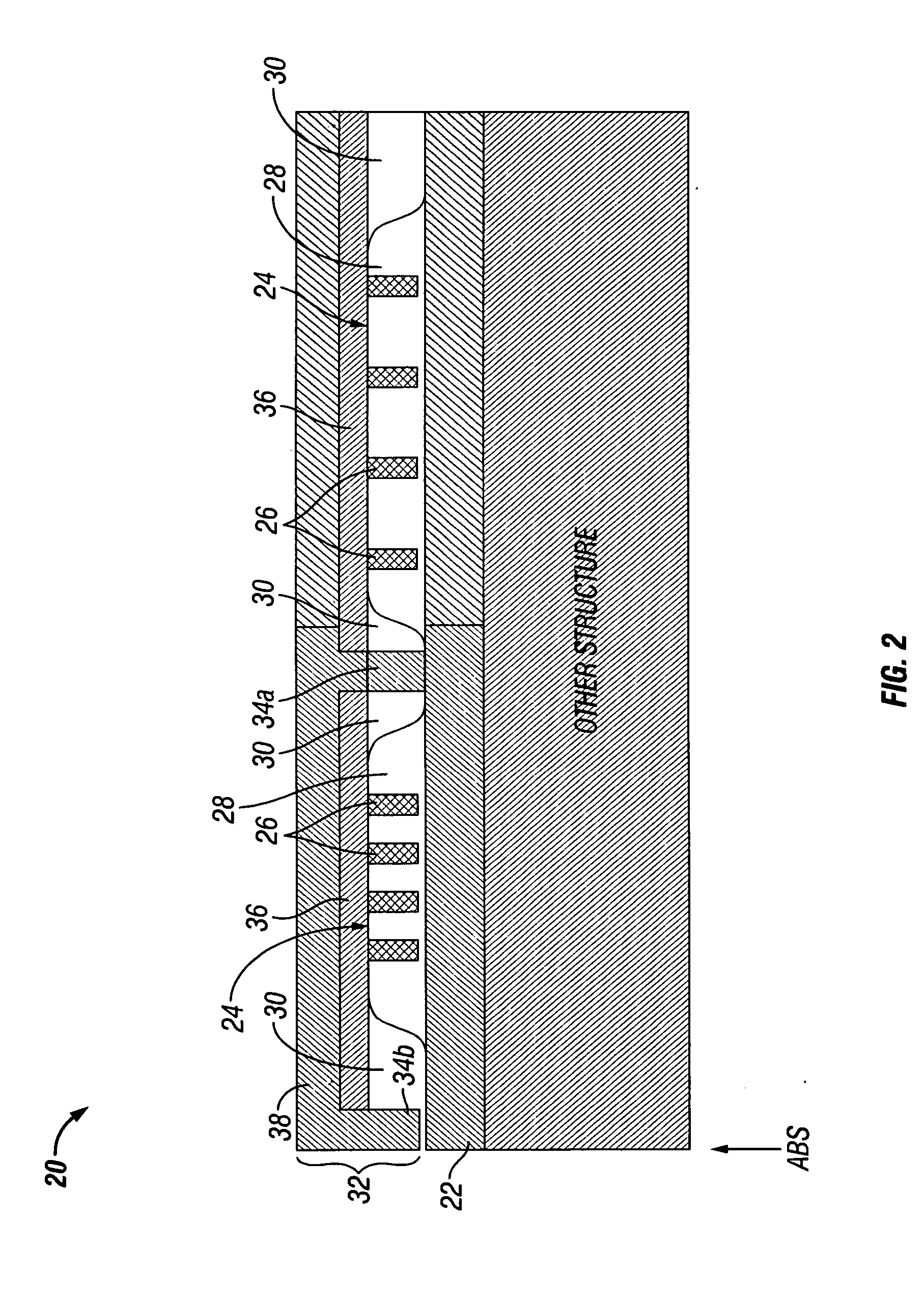Simultaneous planarization of pole piece and coil materials for write head applications
a write head and coil material technology, applied in the field of thin film heads, can solve the problems of difficult control of the geometry of the pb>2/b> photoresist mask, the difficulty of varying the ferromagnetic properties the difficulty of achieving uniform thickness of the pb>2/b> layer, etc., to achieve the effect of improving the equalization of copper, low surface energy and higher surface energy
- Summary
- Abstract
- Description
- Claims
- Application Information
AI Technical Summary
Benefits of technology
Problems solved by technology
Method used
Image
Examples
example 1
[0030] The slurry of this example was based on a commercially available product sold under the name “SC-112” by Cabot Microelectronics, Corporation. As sold, this slurry product comprises water and about 12% (by volume) silica abrasive having a particle size of less than 1000 Angstroms. The abrasive content of the SC-112 slurry was diluted to 9% abrasive content (by volume) by adding an ammonium persulfate / water mixture containing 10 grams / liter ammonium persulfate to produce the desired concentration of about 1.5-3 grams / liter ammonium persulfate in the slurry as a whole. A wafer comprising the structure shown in FIG. 3 was placed on a Strasbaugh model 6DS-SP CMP tool equipped with a standard polishing pad. Note that the hardbaked resist material 28 was hardbaked resist 1529. The polishing conditions were 6 psi down force, 50 rpm spindle speed, 35 rpm table speed and 110 ml / minute slurry flow. Under these conditions, it was observed that the NiFe P2 stubs 34a / 34b and the copper coi...
example 2
[0031] The slurry of this example was the same as that used in Example 1 except that 0.5% (by volume) of TRITON® X100 surfactant was added. A wafer containing the structure shown in FIG. 3 was placed on a Strasbaugh model 6EC CMP tool (similar to the Strasbaugh model 6DS-SP CMP tool of Example 1) equipped with a standard polishing pad. As in Example 1, the hardbaked resist material 28 was hardbaked resist 1529. The polishing conditions were 6 psi down force, 40 rpm spindle speed, 41 rpm table speed and 110 ml / minute slurry flow. Both the NiFe P2 stubs 34a / 34b and the copper coils 26 were exposed after seven minutes forty seconds of polishing time. The planarization results are shown by Table 2 below, which sets forth the differences in height of the various materials of the planarized head 20 of FIG. 4.
TABLE 2STEP LOCATIONSTEP SIZENiFe back gap P2 stub / hardbaked resist1600ANiFe back gap P2 stub / alumina700AWide pitch copper coils / hardbaked resist150ANarrow pitch copper coils / hardba...
PUM
| Property | Measurement | Unit |
|---|---|---|
| concentration | aaaaa | aaaaa |
| concentration | aaaaa | aaaaa |
| particle size | aaaaa | aaaaa |
Abstract
Description
Claims
Application Information
 Login to View More
Login to View More - R&D
- Intellectual Property
- Life Sciences
- Materials
- Tech Scout
- Unparalleled Data Quality
- Higher Quality Content
- 60% Fewer Hallucinations
Browse by: Latest US Patents, China's latest patents, Technical Efficacy Thesaurus, Application Domain, Technology Topic, Popular Technical Reports.
© 2025 PatSnap. All rights reserved.Legal|Privacy policy|Modern Slavery Act Transparency Statement|Sitemap|About US| Contact US: help@patsnap.com



